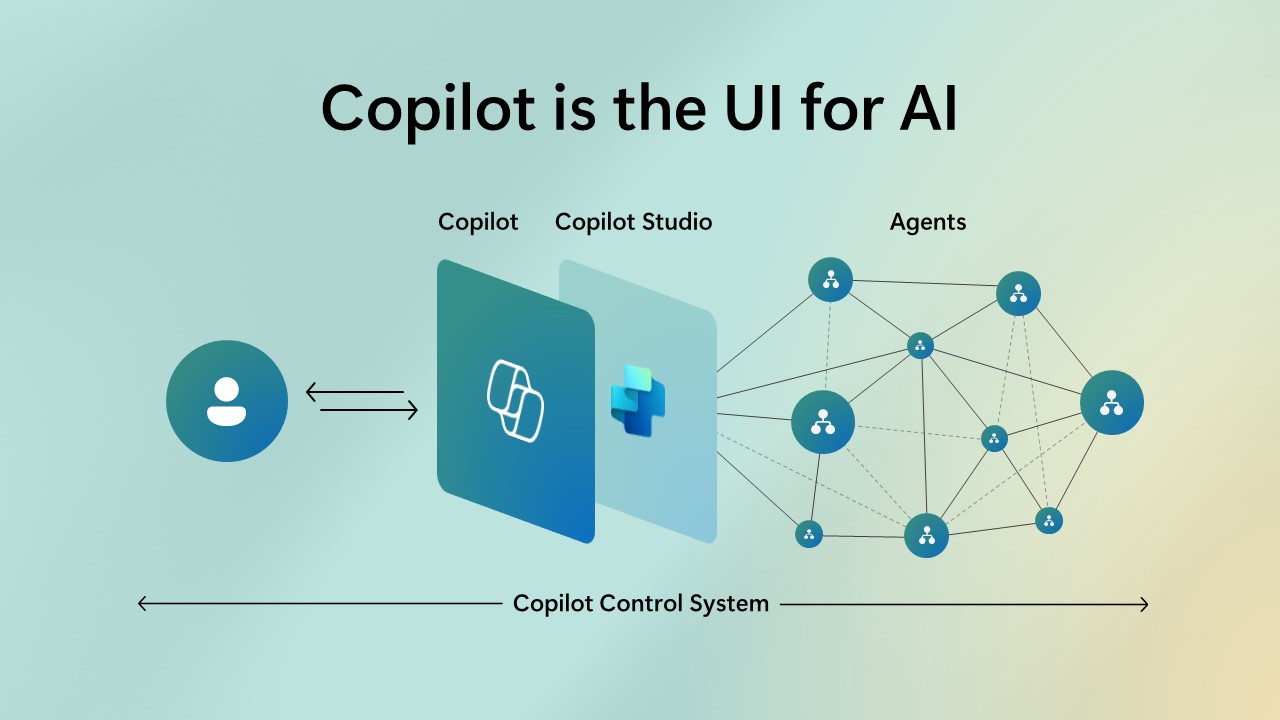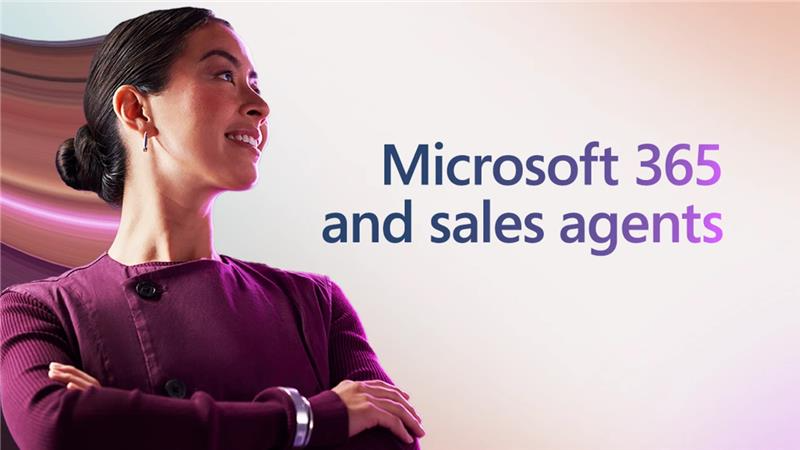
AI Agents represent a fundamental shift in how organizations approach efficiency, decision-making, and business process automation. Microsoft is making significant investments in this space, bringing autonomous AI capabilities into enterprise workflows across sales, finance, supply chain, and customer service.
In this newsletter, we’ll explore:
- What AI Agents are used for and the real value they provide organizations
- Tips on how to deploy Agents in your organization
- Explore how Microsoft is doubling down on AI Agents and what’s coming next
How AI Agents Work and Their Real-World Applications
AI Agents are specialized, task-driven AI assistants that go beyond simple chat-based interactions to autonomously execute business processes. Unlike traditional AI copilots that assist with individual tasks, AI Agents take independent actions on behalf of users or entire teams and manage entire workflows with minimal human involvement.
Key Components of AI Agents:
- Connectors & Integrations: The AI Agents interface seamlessly integrates with enterprise data sources, third-party applications, and business systems to execute automated workflows.
- Decision-Making & Actions: Agents can reason over data, prioritize tasks, and autonomously execute actions, such as responding to customer inquiries or managing purchase orders.
- Scalability: Organizations can deploy AI Agents for specific functions (e.g., sales qualification, financial reconciliation, or supply chain management) and scale adoption based on business needs.
With Microsoft Copilot Studio, organizations can build, manage, and connect AI Agents to their existing enterprise applications, enabling seamless automation across departments. These agents range from basic task automation to fully autonomous workflows, freeing up employees to focus on high-value initiatives.

Microsoft Dragon
Microsoft has recently announced Microsoft Dragon Copilot at the HIMSS 2025 conference. Microsoft’s announcement cited impressive capabilities of this new AI solution:
“Outcomes like 5 minutes of time-savings per encounter on average that have enabled 13 additional appointment slots per provider, per month. A 70% improvement in clinician work-life balance and reduction of feelings of burnout and fatigue. And the delivery of better patient experiences, where 93% of patients say their physician is more personable and conversational due to our technology.”
Dragon is an AI assistant for clinical workflows, designed to streamline documentation, surface information, and automate tasks for healthcare professionals, leveraging voice recognition technology. It’s an AI extensible workspace that offers a unified experience, integrates with electronic health records (EHRs) such as Epic, and supports clinicians across all stages of their workflow.
- Create clinical documentation automatically: Captures multiparty, multilingual patient-clinician conversations and orders ambiently during the visit and converts them into high quality, comprehensive, specialty-specific notes allowing clinicians to connect with patients rather than screens.
- Produce high quality, customizable documentation: Allows clinicians to customize documentation, save templates, AI prompts, and frequently used text.
- Talk naturally: Provides natural language speech capabilities, dictation at the cursor, custom vocabularies, and intuitive voice correction capabilities across devices.

Sales Chat Agent
Microsoft’s Sales Chat Agent, integrated within Microsoft 365 Copilot, is designed to help sales teams work more efficiently by providing instant insights and data-driven recommendations. Instead of spending hours searching through CRM records, emails, and notes, reps can use simple prompts to surface key deal information, identify risks, and prepare for customer meetings—all in one place.
- Accelerates Deal Progression: Instantly pulls CRM and email insights, so reps can ask, “What were the key takeaways from our last meeting?” and get a quick summary.
- Identifies At-Risk Deals: Flags stalled opportunities by analyzing engagement levels, helping teams act before deals go cold.
- Enhances Meeting Prep & Follow-Ups: AI surfaces key customer pain points, past interactions, and relevant insights—no manual research needed.
- Seamless Integration with Microsoft 365: Works within Teams, Outlook, and CRM tools, so sales teams stay in their workflow without switching apps.
Sales Chat Agent removes friction from the sales process, allowing teams to focus on selling, not searching for information.
Need More Inspiration?
We highly recommend you check out Agents of Change. A catalog of real business solutions created by Microsoft customers across multiple industries. Contact Lantern if you need examples of how AI Agents can help your industry.
How to Deploy AI Agents Effectively
Implementing AI into your organization is a multi-step strategy. Explore our blog posts, “From Exploration to Realization: How to Build a Successful AI Strategy” and “Modernizing your Data Infrastructure for AI: A Roadmap to Success” to learn how to integrate AI seamlessly and drive real business outcomes.
1. Identify Use Cases
Evaluate key business systems that employees interact with daily such as CRM platforms, ERP systems, help desks, and financial tools. Identify areas where AI-driven automation can provide efficiency gains and enhance employee productivity.
2. Conduct a Governance Assessment
While AI Agents can streamline operations, they also introduce new security and compliance considerations. A strong governance framework should include:
- Data Access Controls: Ensuring agents only retrieve information they are authorized to access.
- Decision-Making Boundaries: Define tasks that require human oversight versus full automation.
3. Start with a Phased Rollout
Instead of deploying AI Agents company-wide, start with a pilot program focused on high-impact use cases. Track adoption, measure business outcomes, and refine workflows before scaling.
At Lantern, we provide guidance on AI governance models and best practices to help organizations implement AI Agents securely.
A Glimpse into the Future of Microsoft’s AI Agents
Microsoft is investing heavily in AI Agent technology that brings us closer to an agentic experience that transforms physical and virtual spaces. Here are a few recent research projects that highlight the strategic direction of Microsoft:
Magma showcases how AI Agents can operate robots in physical environments and learn over time. This technology is a pioneer in what Microsoft calls Vision-Language-Action (VLA) which helps AI-powered assistants or robots understand their surroundings and suggest appropriate actions. This includes understanding the spatial environment, understanding which objects enable physical interactions, and figuring out how to use new objects it hasn’t interacted with before. This is an early indication of how Microsoft envisions AI Agents evolving—from executing digital workflows to handling complex, multimodal tasks across both virtual and real-world settings.
OmniParser V2 enables Large Language Model AI systems to do enhanced automation on traditional Graphic User Interface (GUI), essentially enabling the AI to predict what it should see on a computer screen next, greatly reducing latency of AI-controlled GUI systems.
Magentic-One is an important step toward AI agents solving universal problems in our daily lives. This system wrangles multiple AI agents simultaneously to solve complex tasks. Magentic-One uses a lead Orchestrator agent that is responsible for high-level planning, directing other agents, and tracking task progress. The Orchestrator begins by creating a plan to tackle the task, gathering needed facts and educated guesses. At each step of its plan, the Orchestrator self-reflects on task progress and checks whether the task is completed. If the task is not yet completed, it assigns one of the AI agents a subtask to complete. In the future this could handle any real time request: stock market summaries, finding and editing documents, to ordering you lunch.
Imagine a world where you ask a Chat interface to make you a sandwich. This triggers a tool like Magentic-One to understand the food you have on hand, order grocery delivery with OmniParser V2 operating Instacart, and once the delivery arrives your Magma-controlled home robot unpacks the food and then makes you a sandwich. This level of technology integration could be several years into the future, but the frameworks are being constructed today.
Organizations that begin experimenting with AI Agents today will be well-positioned to take advantage of these advancements as they mature.
Schedule your Copilot AI Agent Briefing
With Microsoft expanding AI Agent capabilities across Copilot, organizations may struggle to understand how these agents fit into their workflows and where they deliver the most value. Our Copilot AI Agent Briefing simplifies this complexity. We provide a high-level overview of Microsoft’s AI Agents, their key functions, and how they can be leveraged to automate processes and drive efficiency.
💡 What’s Next?
Stay tuned for our next month’s newsletter where we will take a deeper dive into announcements from the Microsoft Fabric Conference.
If your organization is considering AI Agents as part of its automation strategy, let’s start the conversation.
Contact us today to discuss how Lantern can help you implement AI Agents effectively.
